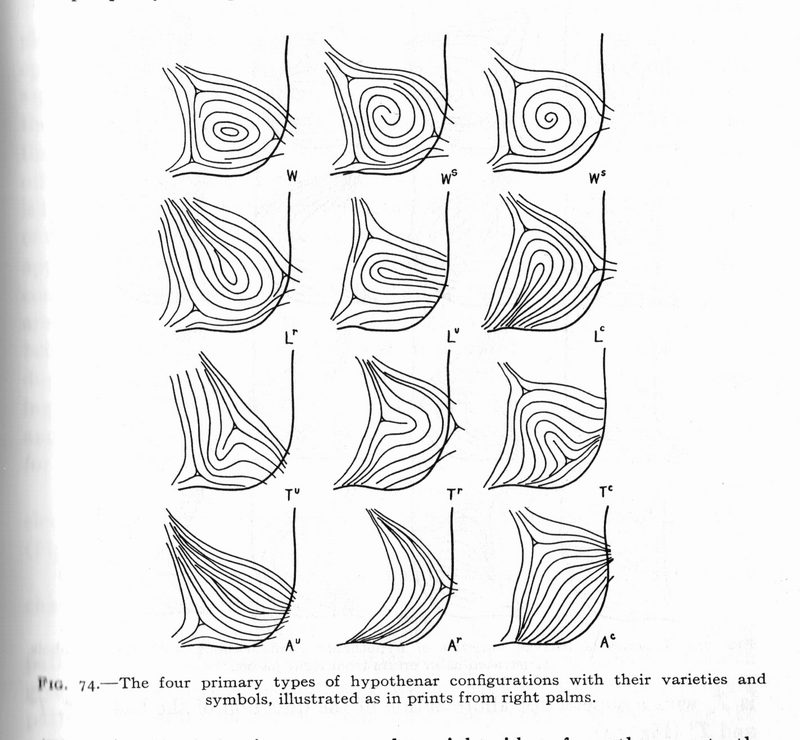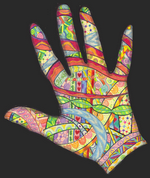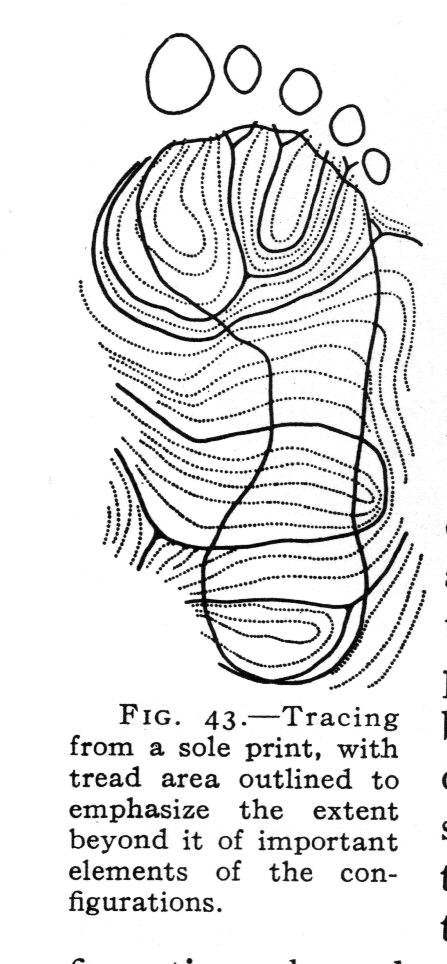Your opinion & share...
Latest topics
Search
Who is online?
In total there are 127 users online :: 0 Registered, 0 Hidden and 127 Guests None
Most users ever online was 387 on Tue Dec 05, 2023 7:35 pm
Moderators & partners
Most Viewed Topics
Statistics
We have 5933 registered usersThe newest registered user is Skylines3
Our users have posted a total of 47502 messages in 4941 subjects
Top posting users this week
| No user |
Recommendations
• The FREE hand reading services at the Modern Hand Reading Forum are being continued in 2019 with the assistance of Google adsense!

MAJOR HAND READING SYNONYMS
Palmistry, Palm Reading, Hand Analysis, Chirology & Chiromancy. Learn how to read hands according the Modern Hand Reading paradigm & you can use this forum as your palm reading guide!
deleted deleted
3 posters
Modern Hand Reading Forum - Discover the language of your hands: palm reading & palmistry forum! :: III - MODERN HAND READING - Various systems for reading hands! :: IIIa - Modern Palmistry: general topics, questions :: IIIg - Dermatoglyphics + fingerprints
Page 1 of 1
kiwihands- Posts : 364
Join date : 2011-01-09
Location : nowhere
 Re: deleted deleted
Re: deleted deleted
You really didn't show enough print to fully follow the flow.
In my opinion, it is a tented arch.
Middle column, 3rd down, or a plain arch, column on right - bottom sample.

"Finger Prints Palms & Soles" Cummins & Midlo
In my opinion, it is a tented arch.

Middle column, 3rd down, or a plain arch, column on right - bottom sample.

"Finger Prints Palms & Soles" Cummins & Midlo

Patti- Posts : 3912
Join date : 2010-07-24
 Re: deleted deleted
Re: deleted deleted
deleted
Last edited by kiwihands on Mon Apr 16, 2018 9:49 pm; edited 1 time in total
kiwihands- Posts : 364
Join date : 2011-01-09
Location : nowhere
 Re: deleted deleted
Re: deleted deleted
Hi Kiwi,
I probably should have been clearer since I have now mentioned three ways the ridges flow from the radial side. (here and in a different thread)
They can flow off the side from radial to ulnar.
They can form a loop and return back to the radial side *above* the thumb.
Then they can also flow from the radial side all the way to the ulnar edge, but instead of disappearing (looping) off the side (back of hand) the ridges curve along the edge and flow back toward the radial side at the wrist area. See the bottom pattern of the middle column above.
This A-Main line has some ending locations that are more common than others. It can be located in a wide span from between the little finger all the way to the wrist by the thenar area. Rarely is it located at those extreme ends. Mostly it ends under the heart line and above the head line.
It's normal to connect to a higher up axial triradius, but it's just as normal to not connect to it. I've just looked at illustrations that show both possibilities.
I probably should have been clearer since I have now mentioned three ways the ridges flow from the radial side. (here and in a different thread)
They can flow off the side from radial to ulnar.
They can form a loop and return back to the radial side *above* the thumb.
Then they can also flow from the radial side all the way to the ulnar edge, but instead of disappearing (looping) off the side (back of hand) the ridges curve along the edge and flow back toward the radial side at the wrist area. See the bottom pattern of the middle column above.
This A-Main line has some ending locations that are more common than others. It can be located in a wide span from between the little finger all the way to the wrist by the thenar area. Rarely is it located at those extreme ends. Mostly it ends under the heart line and above the head line.
It's normal to connect to a higher up axial triradius, but it's just as normal to not connect to it. I've just looked at illustrations that show both possibilities.

Patti- Posts : 3912
Join date : 2010-07-24
 Re: deleted deleted
Re: deleted deleted
Hello Kiwihands,
A few comments from my side:
1 - This palmar 'triradius' is probably not high enough positioned to be described as a 'high positioned':
Therefore I would describe it as a t'-triradius (which is between the normal t and the high possitioned t'') for multiple reasons:
1) It is positioned at a considerable position below the head line (and the head line even has downward slope);
2) The AtD-angle appears to be smaller than 40 degrees (which is quite normal);
3) The distance between a- and d-triradius is MUCH smaller than the distance between the t' triradius and the b-triradius (the b-triradius is found below the middle finger);
And I agree with Patti about that we see too little of the full mount of Moon to make a permanent assessment.
2 - But I do not agree with Patti about calling it a 'tented arch':
Because Patti's featured picture (take from Cummins & Midlo) clearly describes that for a tented arch there is a requirement that certain ridge lines 'curve around' the TENT (at the pinky side of the triradius). But that requirement is not seen in your hand at all: because all ridges appears to end as 'horizontal ridges' at the pinky-side of your hand.
So I don't see any evidence at all to associate your t'-triradius with a tented arch.
3 - And finally, regarding the path of the a-line (starting in the triradius below the index finger) and the upper radiant from the t'-triradius:
I think you have followed the ridges quite well with the litte 'dots' but if I continue to follow those dots in the photo... then I can observe that there are a few ridges between both path: I think that there are about 4 ridges between them.
Therefore I would like to advice you to try to follow the path of both the a-line and the upper radiant once again, and just a little bit further (especially the a-line clearly curves inward). Then you should be able to confirm what I just described.
Anyway, thanks again for sharing your questions!

 Re: deleted deleted
Re: deleted deleted
Martijn, take a look at the illustration on page 50 of Cummins & Midlo. The foot shows the pattern extended "extralimital" Read bottom of page 58, top of page 59 for details.
Kiwi, Martijn is incorrect in telling you that the entire pattern must be visible on the palm side to count as a specific pattern.
I have to leave for work shortly (reading hands for a Cincinnati Ballet event tonight) but will share more later.
Kiwi, Martijn is incorrect in telling you that the entire pattern must be visible on the palm side to count as a specific pattern.
I have to leave for work shortly (reading hands for a Cincinnati Ballet event tonight) but will share more later.

Patti- Posts : 3912
Join date : 2010-07-24
 Re: deleted deleted
Re: deleted deleted
Patti wrote:Martijn, take a look at the illustration on page 50 of Cummins & Midlo. The foot shows the pattern extended "extralimital" Read bottom of page 58, top of page 59 for details.
Kiwi, Martijn is incorrect in telling you that the entire pattern must be visible on the palm side to count as a specific pattern.
I have to leave for work shortly (reading hands for a Cincinnati Ballet event tonight) but will share more later.
Patti, you are referring to a comment about 'extralimital' triradii... which is basically ONLY related to a situation where a loop/whorl is seen without ANY triradius at all (because it has shifted towards the back of the finger).
So, I first observed that you made an unfounded suggestion for a 'palmar tented arch' ... but now I observe that you are also trying to defend that suggestion with an out-of-context argument (specified to the issue of: 'extralimital triradii', a topic which only directly relates to missing triradii in fingerprints).
And I should add here: yes of course... I understand that the issue 'extralimital triradii' can also manifest in the hypothenar area, but I also understand that this would require the presence of specified ridges that have a certain path which can directly be associated with an 'extralimital' palmar triradius. However, I already mentioned in my first comment that such ridges are not visible at all: because in all three areas outside the t'-triradius the path of the ridges is actually pretty normal: there are no 'strong curvations' that could be associated with a 'missing triradius'.).
Patti, it would have made much more sense if you had immediately described specified characteristics of Kiwihands' hypothenar area which made you think of a 'tented arch'.
Therefore I invite you to specify your observations ... for example: can you name characteristics which can directly be associated with a 'palmar tented arch'?
(So far I think maybe you got a little bit mislead by the little 'right angle marker' that Kiwihands used to mark the position of the hypothenar triradius, but the surrounding ridges indicate that her 'right angle marker' does not reflect the path of the ridges in that area - see the picture below)

 Re: deleted deleted
Re: deleted deleted



Martijn, although Cummins & Midlo mention the triradii, their comment is not limited to triradii, but also the rest of the pattern.
Kiwi, there's a time in our early development that nearly the entire body is patterned. Palms & Soles with their ridges and the rest of the body with hair folicles or lanugo, the patterns formed are permanent in the directional growth of hair and the ridges.

Last edited by Patti on Sat Apr 16, 2011 6:00 am; edited 1 time in total

Patti- Posts : 3912
Join date : 2010-07-24
 Re: deleted deleted
Re: deleted deleted
Patti wrote:
Martijn, although Cummins & Midlo mention the triradii, their comment is not limited to triradii, but also the rest of the pattern.
Kiwi, there's a time in our early development that nearly the entire body is patterned. Palms & Soles with their ridges and the rest of the body with hair folicles or lanugo, the patterns formed are permanent in the directional growth of hair and the ridges.
Yes Patti, I can confirm the comments in your last post.
But the problem that I observe is... that you incorrectly made the assocation between Kiwihands' hypothenar and this phenomenon. Because the essential characteristics of a 'hypothenar tented arch' are actually missing in her hand: again, see the curves of the ridges that flow to the outside of the palm.
And actually... the consequence of how you made this association is that ANY triradius on the hypothenar could be associated with such 'extralimital' patterns - but that is not what Cummins & Midlo described at all.
For, you association actually violates the visual guidelines that Cummins & Midlo described for the 'hypothenar tented arch' in the picture in your former post.
Therefore, so far you appear to ignore the other differences between specific characteristics of the 'hypothenar arches' and the 'hypothenar tented arches, in the picture below:

I hope this explains why I asked you to describe specific characteristics of Kiwihands' hypothenar.
But it is not surprising to see that even after 3 posts you still didn't mention any characteristic (beyond the position of the hypothenar triradius itself) - because I observe that the essential characteristics of a 'hypothenar tented arch' are actually missing in her hand.
 Re: deleted deleted
Re: deleted deleted
Patti wrote:You really didn't show enough print to fully follow the flow.
In my opinion, it is a tented arch.
Middle column, 3rd down, or a plain arch, column on right - bottom sample.

Patti- Posts : 3912
Join date : 2010-07-24
 Re: deleted deleted
Re: deleted deleted
deleted
Last edited by kiwihands on Mon Apr 16, 2018 9:50 pm; edited 1 time in total
kiwihands- Posts : 364
Join date : 2011-01-09
Location : nowhere
 Re: deleted deleted
Re: deleted deleted
deleted
Last edited by kiwihands on Mon Apr 16, 2018 9:50 pm; edited 1 time in total
kiwihands- Posts : 364
Join date : 2011-01-09
Location : nowhere
 Re: deleted deleted
Re: deleted deleted
kiwihands wrote:Thanks for your comments Martijn! Again, it’s great to be able to draw on more experienced reader’s views than mine! I very much appreciate how you structure your responses, too; it makes them very easy to follow and understand.
It’s a relief to know that mine is just a t’ triradius, especially after reading about the possible implications with congenital heart disease, etc., of the higher one, and very useful to have those 3 criteria you mentioned to determine if an axial triradius is abnormally high. I knew about the AtD angle coming into play, but not about the position of t’ relative to the headline nor about the importance of the distances between the other triradii.
And yes, there are no ridges curving around the triradius, so I agree with you – probably no tented arch. But i have uploaded a larger picture just in case.
Thank you also for checking on my tracing – yes in the middle there I became unsure of what to do, since the ridges become very fine and seem to continue in slightly different directions below the head line. But you’re right; it may curve inwards and actually head down to the wrist. Good to know that whichever way the A-line goes, it’s all pretty normal, and I won’t have to worry about how much butter I put on my toast.
Thanks again
Kiwi
Hello Kiwihands,
Very nice to hear that my posts are easy for you to follow (yes, I usually use illustrative elements to make my 'lengthy' posts a bit more readable by 'structure').
And great to hear that you now also understand/recognize why you do not have a 'tented arch' on your mount of moon (yes, the ridge flow says it all: there are no steep 'curving ridges').
And yes, you are correct that the A-line actually ends at the wrist.

Modern Hand Reading Forum - Discover the language of your hands: palm reading & palmistry forum! :: III - MODERN HAND READING - Various systems for reading hands! :: IIIa - Modern Palmistry: general topics, questions :: IIIg - Dermatoglyphics + fingerprints
Page 1 of 1
Permissions in this forum:
You cannot reply to topics in this forum





» Teacher square on my Jupiter mount
» Handreading International Conference 2024
» Can anyone read it for me?
» Are there any signs in the hands that you are a twin flame?
» Square on Marriage line
» Cross in mount Jupiter
» clinodactyly: top phalanges bending towards Mercury finger
» Can anybody please read this hand
» Nisha Ghai
» Absolutely non-sense career till now
» Fate Destiny Line -
» VIII - Palmistry books TOP 100 - listed by 'Amazon Sales Rank'!
» Stewart Culin - Palmistry in China and Japan
» Herbert Giles - Palmistry in China